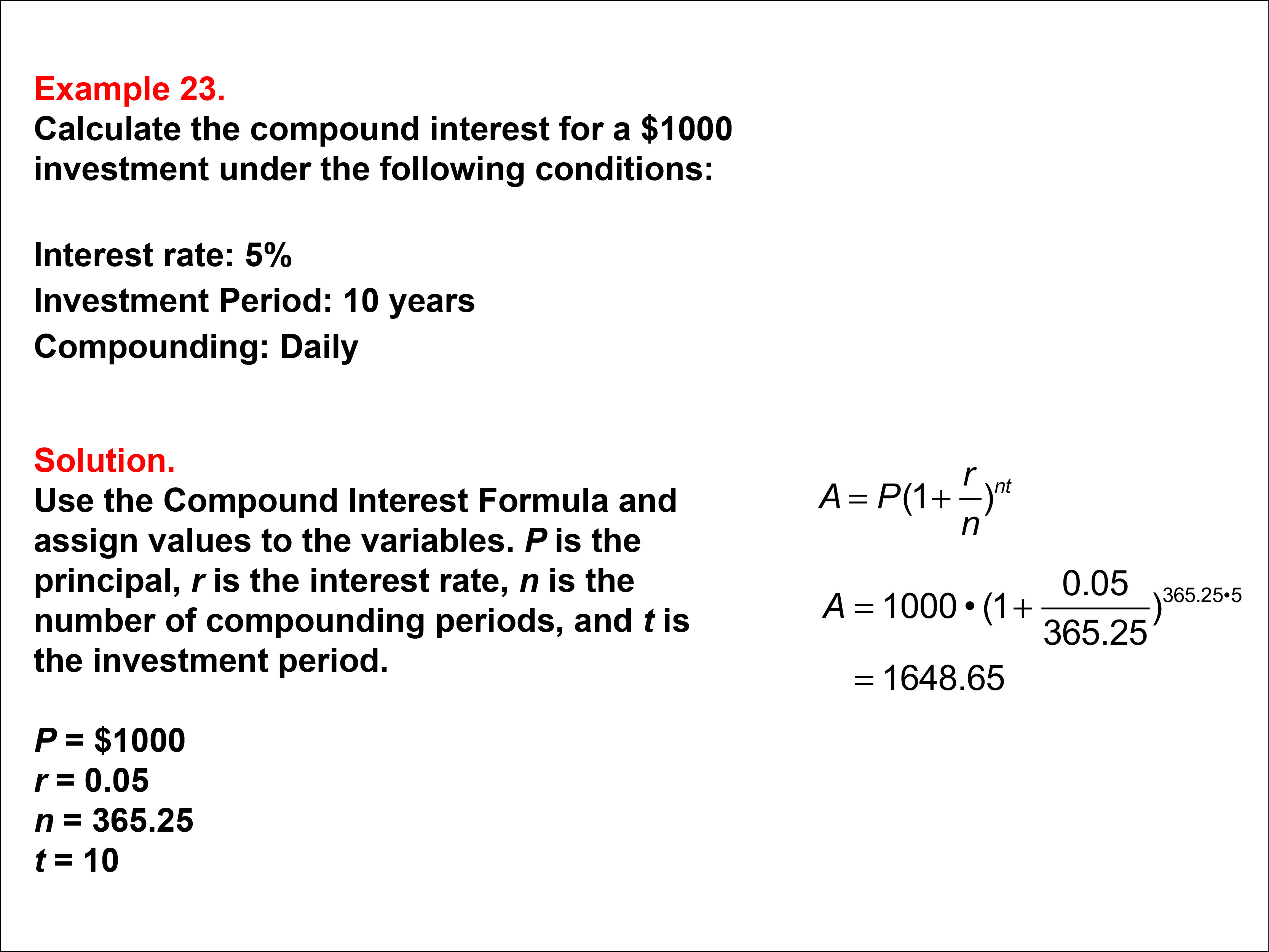
Display Title
Math Example--Math of Money--Compound Interest: Example 23
Display Title
Math Example--Math of Money--Compound Interest: Example 23

Topic
Math of Money
Description
This example illustrates calculating compound interest for a $1000 investment with a 5% interest rate over 10 years, compounded daily. Using the formula A = P(1 + r/n)nt, with P = 1000, r = 0.05, n = 365.25, and t = 10, the result is $1648.65.
Understanding compound interest is essential for financial literacy. This example demonstrates daily compounding and its effect on investment growth compared to other frequencies. By exploring various scenarios, students learn how different compounding intervals influence financial outcomes.
Providing multiple examples helps students understand the nuances of compound interest calculations. They can observe patterns and recognize how changes in frequency impact results, which enhances their problem-solving abilities.
Teacher Script: "Today we'll calculate compound interest using daily compounding on a $1000 investment at a 5% rate for 10 years. Observe how this impacts your total return compared to other compounding frequencies."
For a complete collection of math examples related to Compound Interest click on this link: Math Examples: Compound Interest Collection.
| Common Core Standards | CCSS.MATH.CONTENT.7.RP.A.3, CCSS.MATH.CONTENT.HSF.LE.A.1, CCSS.MATH.CONTENT.HSF.IF.C.8.B |
|---|---|
| Grade Range | 8 - 12 |
| Curriculum Nodes |
Algebra • Exponential and Logarithmic Functions • Compound Interest |
| Copyright Year | 2013 |
| Keywords | interest, compound interest, math of money |